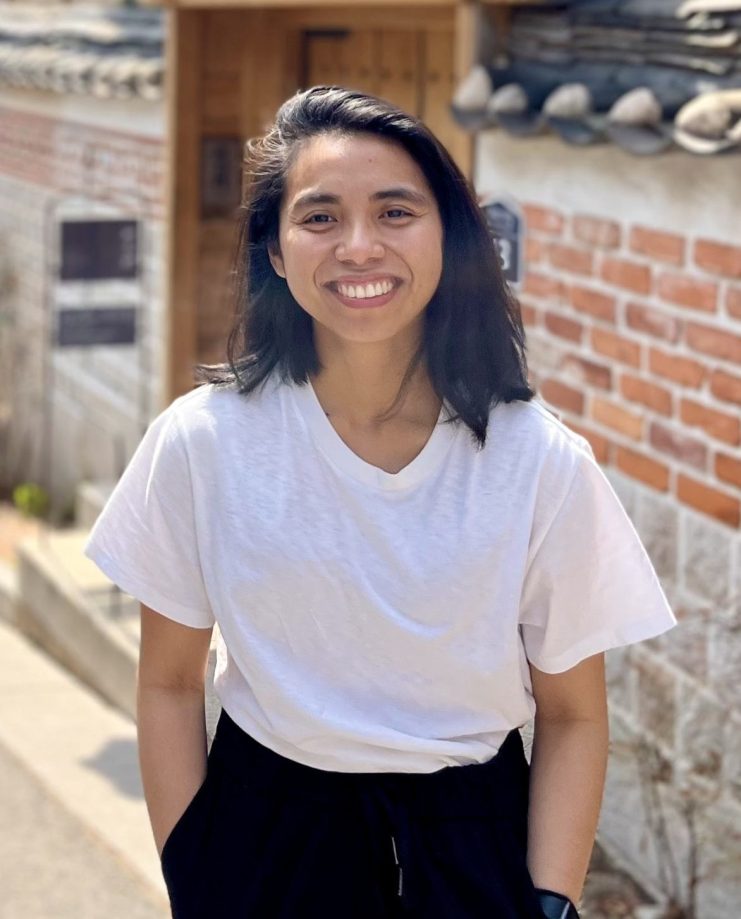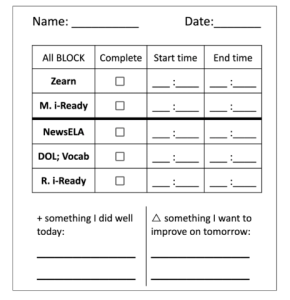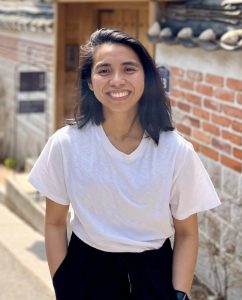
One Small Step For The Teacher, One Giant Leap For The Students
It’s that time of the day again: All BLOCK, when small groups of students rotate to do differentiated work with me while the rest work independently to complete five All BLOCK activities.
To myself I wondered, will I get through all three groups today?
At my SEL Lead Learner Inquiry Session with Lead by Learning, I was asked to reflect on an aspect of my teaching I wanted to explore for my year-long inquiry. When I paused to reflect on a part of the academic day that is of high value for students and can be strengthened, I immediately thought of our All BLOCK time. While small group time is incredibly beneficial for students, I often have to pause small group instruction to redirect other students, or sometimes the whole class, while they are working independently In addition to the difficulty of providing undisrupted differentiated teaching to each small group, the quality and completion rate of the independent All BLOCK activities were low.
The Million Dollar Question
How can I create a positive learning environment that encourages the students to make responsible decisions and take ownership of their learning during All BLOCK? I was particularly interested in student agency:
- How do the students perceive the 5 All BLOCK activities? Do they believe each one is helping them academically?
- Do they know how to / are they able to complete each one?
- What are the reasons students get off-task?
- Is there any incentive for them if they complete each one?
The Power of Collaborative Brainstorming
After collecting data through observations and a student survey, I met with my mentor and shared about my noticings and wonderings. She suggested that I create a simple checklist for the students, so I drafted one and introduced it to the class. Initially, I only had the 5 All BLOCK activities the students were asked to complete projected on the board. I hoped the checklist would give the students a more tangible sense of agency, build their self-awareness, and strengthen their skills to reflect on their independent time.
Ready, Set, Go!
As a class, we went through each of the 5 All BLOCK activities:
- I explained the importance of each activity and which skill they are practicing (and improving!) each time they work on it.
- I had five students complete each of the activities in front of the class, while I made sure all of the students were able to complete it. (I had to help a few students one-on-one after.)
- I demonstrated how to complete the All BLOCK checklist.
- I leveraged our classroom economy and students’ excitement to earn tickets as a reward if they finished their daily All BLOCK assignments.
Success and small revision
After only a few days of the checklist, I saw a dramatic increase in focus and completion of work, as well as excitement! I rarely had to pause during small group instructions and was able to deliver better quality instruction to each small group. I also checked the rate of completion and quality of the All BLOCK activities and saw an increase for ALL students. For example, each i-Ready minutes increased from 9 minutes a day to 16 minutes (the goal is 15 minutes a day) and assigned Social Studies NewsELA, Math Zearn lessons and Daily Oral Language “DOL” and Vocabulary slides completion rate increased from 40% to at least 80% daily!
My shifts in instruction to integrate SEL and academics was paying off.
As I ponder our collective growth during All BLOCK, I saw that the checklist provided a helpful structure for the students to follow. As I interviewed some students, it was clear that it gave them a step-by-step task and a clear goal. The initial reward system that leveraged the successful classroom economy motivated the students to use the checklist until it became a routine they loved. During our closing circles, a couple of students always remarked that their favorite part of the day was All BLOCK.
As I continued to attend our monthly Lead by Learning meetings, I was able to continuously reflect during the short but powerful 10-minute “think alone” time, as well as talk through and brainstorm with colleagues. Thus, I made small revisions along the way: changing the checkboxes that indicated completion to specify the minutes/lesson/score and adding a “spin the wheel” reward for the ones who completed all activities. I implemented these after about 2 months of the checklist to counter potential stagnation and to continue to increase agency and excitement.
More successes and life-long revisions
Returning to the million-dollar question: How can I create a positive learning environment that encourages the students to make responsible decisions and take ownership of their learning during All BLOCK?
When my mentor visited during All BLOCK, she commented that the class is like a “well-oiled machine.” As soon as we walked into the classroom after recess, students knew to grab a checklist and start on their independent assignments without any instructions, and I was able to be fully present with my small group. Overall, the impact included:
- Positive and optimal learning environment
- Improved student quality of work
- Increased in quality and quantity of small group
Despite all the unexpected positive impact, the greatest lesson that I learned is not about the invention and implementation of the All BLOCK checklist, but the power of pausing to reflect and inquire about one thing! I didn’t have big expectations with the checklist, especially because it seemed such a minor tweak. Yet once again, I learned that I’ll never know until I try!
I was surprised at how a seemingly small act made a huge daily impact. This encourages me to keep implementing the practices I learned in this inquiry cycle – notice, wonder, try, assess, reflect, repeat – not just for professional but also for personal growth.
 Sierra Balatan was a 4th grade teacher at Emerson Elementary School in Oakland Unified School District for 3 years. She received her B.A. in Cognitive Science from UC Berkeley and her M.A. in Teaching from the University of Southern California. When she is not teaching, preparing lessons, or reflecting on her practice, she enjoys going on adventures with friends, rock climbing, and prayerfully reading the Bible in hopes of loving God and people better.
Sierra Balatan was a 4th grade teacher at Emerson Elementary School in Oakland Unified School District for 3 years. She received her B.A. in Cognitive Science from UC Berkeley and her M.A. in Teaching from the University of Southern California. When she is not teaching, preparing lessons, or reflecting on her practice, she enjoys going on adventures with friends, rock climbing, and prayerfully reading the Bible in hopes of loving God and people better.
